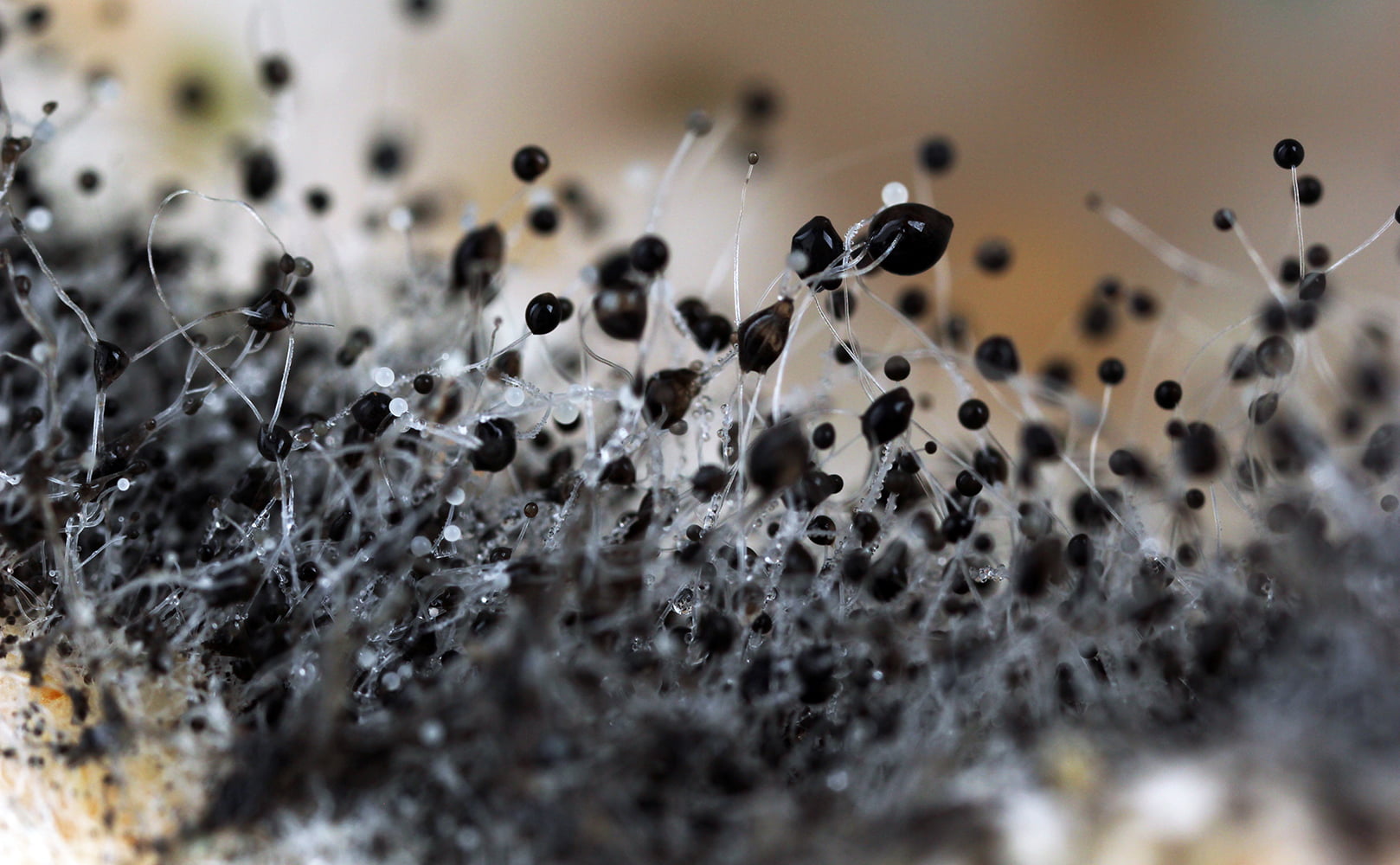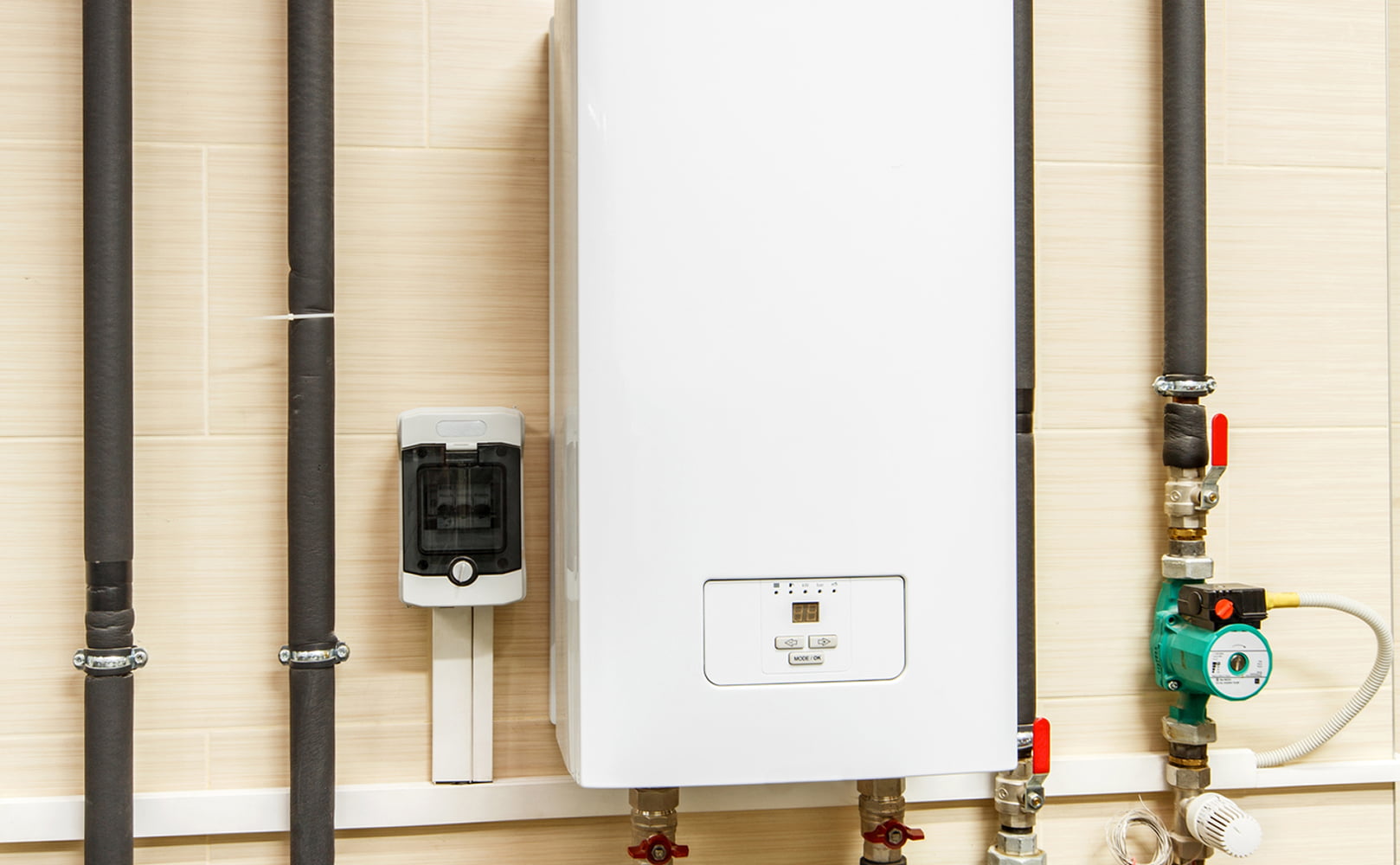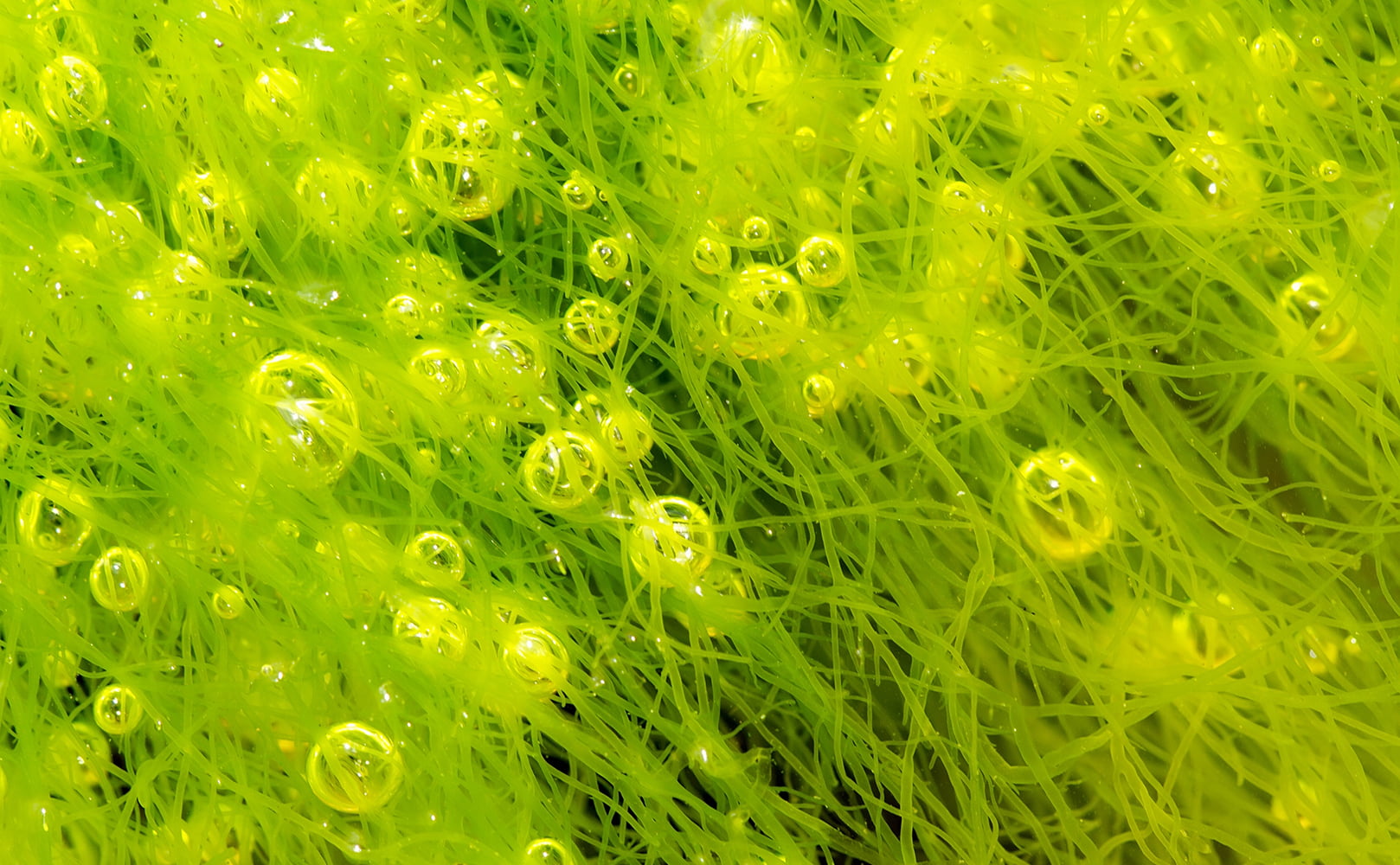Mold in Whole House Water Filter? Here’s What to Do!
Written by: Gene Fitzgerald // Last Updated: May 11, 2023
This page may contain affiliate links. If you buy a product or service through such a link we earn a commission at no extra cost to you. Learn more.
Whole house water filters are an incredibly effective way to provide clean water to your entire home, but they are not flawless. One recurring problem that they can have is mold.
Mold is a nasty problem to have, but luckily for you, it isn’t a complicated one to deal with. If you have mold issues in your water filter, you’ve come to the right place.
In this article, we’ll teach you what causes mold to grow in a whole house filter system, how to get rid of it, how to prevent it from showing up again, and why you need to remove mold in the first place.
Key Takeaways
For cartridge-based whole house water filters:
- Remove the filter housing(s).
- Use white vinegar, baking soda mixed with water, or unscented household bleach diluted in warm water to clean the affected areas.
- If the filter cartridge is affected, consider replacing it.
For tank-based systems:
- These are more difficult to clean as you can’t easily remove the filter media to clean inside the tank.
- Consider disposing of the entire filter media once it is out.
- Clean all infected parts thoroughly using the cleaning agents mentioned above.
What Causes Mold to Grow in a Whole House Water Filter?
Mold is a fungus that grows naturally in dark places with a lot of moisture, like your pipes. For mold to grow in your home, it only needs a warm, dark environment and a food source, like the mineral build-up on your pipes or the paper in your sediment filter cartridge.
Not cleaning your whole house water filter regularly will cause mold to grow more often and more quickly.
If your water comes from a well and the well cap is damaged, you could also be exposed to mold.
Getting Rid of Mold
Getting rid of mold boils down to using some cleaning solution like bleach, vinegar, or another chemical to clean the affected areas – think water filter, pipes, and water heater.
Let’s take a look at how to clean each:
Water Filter Maintenance
Before cleaning any kind of filter, make sure you are wearing gloves and never touch mold with your bare hands.
Cartridge-Based Filters
If your whole house water filter is cartridge-based, you just have to remove the housing and clean it using a cleaning solution. You have three options:
- Bleach: You can use unscented household bleach diluted in warm water to clean the housing. Remember that bleach is abrasive, so this might cause some damage. Use a sponge or brush to scrub off the mold.
- White vinegar: You can soak the housing in white vinegar or use a spray bottle to cover the unit. Let it sit in the vinegar for 15 to 30 minutes. Rinse the housing afterwards.
- Baking soda: Use ¼ tablespoon of baking soda mixed with water in a spray bottle and spray the solution on all the moldy areas. Let it sit for 10 minutes, and then scrub gently.
If the filter cartridge is infected as well, there’s nothing you can do except replace it.
Tank-Based Filters
These types are much more difficult to clean as you can’t easily remove the filter media to clean inside the tank.
Consider disposing of the entire filter media once it’s out. Also, make sure to clean all other whole house water filter parts thoroughly.
How to Remove Mold from Your Pipes?
Water pipes can be difficult to clean, and since they are always wet and dark, you most likely won’t be able to prevent mold from growing permanently. However, you can keep it under control and clean them…
Main Water Supply Pipes
To clean your pipes, pour your cleaning solution down your main water supply and then flush your cold water lines. You can use chemicals, but we recommend something less aggressive like vinegar.
To flush your cold water lines:
- Open the cold faucet on your kitchen sink and let it run for one to two minutes.
- Turn on the other faucets in your home one by one, letting each flow for one to two minutes. Make sure to flush the connectors to your appliances as well.
Wastewater Pipes
- Some experts recommend cleaning wastewater pipes every month by pouring ½ cup of mold solution down each drain and letting it sit for one hour.
- Then pour two cups of boiled water and flush the pipes with hot water from the faucet.
- After that, ¼ cup of baking soda is followed by one cup of vinegar.
- Wait 30 minutes.
- Finally, repeat step 2, and you are done.
Water Heaters
If there’s mold in your water pipes, there’s probably mold in your water heater. When it comes to mold in your heater, you have two options:
Refill the Water Heater
Drain all the water out of your tank-based water heater. You can do this by turning on all hot water faucets in your home and running the water for 15 minutes (30 minutes for an 80-gallon tank). Once it’s empty, allow it to refill.
This should be used only for minor mold issues.
Clean the Hot Water Tank with Vinegar
This is a much more complex process, so you might want to save it for more serious mold problems. Here’s how to do it:
- You’ll have to power off and drain your heater tank to remove the anode rod.
- Depending on its size, pour 1-3 gallons of vinegar into your tank, and put the anode rod back in.
- Allow water to refill the tank, and let the solution sit for 6 hours before draining it.
- Once the solution has been drained, refill the tank with water and turn the power back on to the tank.
Note that this is a summarized version of the process.
How Can You Prevent Mold Growth in Your Whole House Water Filter?
The only sure way to prevent mold in your whole house water filter is to install another type of filter media that specifically kills mold, such as a UV filter system.
However, you can also prevent mold from building in your filter by regularly cleaning all the different parts and replacing filter cartridges.
How to Test for Mold in Water
Other than contacting a professional to test your water, you can do it yourself in one of two ways:
Petri Dish Method
- Buy a Petri dish test plate for mold.
- Open the plate and use a pipette or a clean eye dropper to transfer ten drops of water to the test plate.
- Replace the lid onto the plate, tape it shut, and wrap it with foil.
- Let the sample sit at room temperature for five days.
- After the time has passed, lift the foil gently and check for mold growth. If there’s none, let it sit for an additional two days and check again.
- If there is growth, repeat the test with a new plate to confirm the results.
Tap Score Mold and Fungus Water Test Method
This method uses a specialized test for mold in water. The Tap Score Mold and Fungus Water Test kit tests your water for black mold and other aspergillus formations.
Tap Score ships you everything you need to test the water, including a guide on how to collect the sample. Once the sample is collected, you send it to their lab, and within 8 days you get a full lab report back.
What Are the Different Types of Mold in Water?
There are several different types of mold and different ways to classify them. The following list focuses on their differences based on their health effects:
- Allergenic molds: People with allergies and those with asthma are susceptible to allergenic molds. Those who are allergic to mold experience a hypersensitive reaction, resulting in extreme inflammatory response in the respiratory system. People without allergies are usually unaffected by small amounts of allergenic mold. Most allergenic molds can be removed with home disinfection products, but some require the assistance of a professional.
- Pathogenic molds: Certain diseases and infections can also be caused by pathogenic mold. Pathogenic molds can be dangerous to people with compromised or weakened immune systems, which is why they are classified as opportunistic pathogens. The most common victims of pathogenic molds are infants, the elderly, and people with suppressed immune systems. Disinfectants can be used to kill pathogenic mold; however, large colonies will need to be removed by a professional.
- Toxic molds: Toxic mold produces mycotoxins, a poisonous chemical that can be deadly to humans. Unlike allergenic and pathogenic molds, toxic molds harm other living things intentionally rather than as a consequence. Mold toxins are among the deadliest chemicals on earth. These are found on mold and in mold spores. A person can be exposed to mycotoxins through ingestion, dermal exposure (skin contact), or inhalation. Depending on the individual, it can cause temporary irritation or even long-term illness. When it comes to toxic mold, a professional is required to remove the mold and dispose of any affected materials.
Mold vs. Mildew vs. Algae
For starters, algae are plant-like bacteria, while mold and mildew are fungi. Algae grow in places with sunlight and warm temperatures, while mold and mildew prefer moist environments and darkness.
Mold and mildew are very similar, growing under similar circumstances, but they have differences in color and texture. Mildew has lighter colors and looks like flat and powdery dots. Mold, however, has darker shades and looks fuzzy and slimy.
Furthermore, while algae can grow with sunlight and water, mold must consume organic material to survive and grow.
Their differences also extend to the way they affect your health. Algae is mostly harmless, though certain types (such as blue-green algae) can produce harmful toxins.
Mold, however, is always an issue and should be dealt with as soon as possible.
Health Symptoms – Why Is Mold in Water Dangerous?
Drinking a few sips of moldy water probably won’t do much to you, if anything at all. Our stomach acid can handle most of the mold spores we consume without much issue.
However, constant exposure to moldy water, and high quantities of mold in your water, could lead to health problems.
In the short-term, continued exposure to mold in drinking water can cause the following symptoms:
- Headaches
- Respiratory problems
- Blurry vision
- Sore throat
- Red eyes
- Skin rashes and irritation
- Allergic reactions
- Nosebleeds
People with a compromised immune system or mold allergies should be particularly wary of mold in water.
If your mold exposure continues, it could cause some serious health problems. Long-term exposure to mold in drinking water can lead to toxic mold syndrome, Legionnaires disease, development of mold allergies, organ damage, and the development of asthma.
It’s important that you test your water if you’ve found traces of mold or suspect it might have mold, to know what you are dealing with in terms of contamination.
If you have any questions about mold in whole house water filters please don’t hesitate to leave a comment below!
Information provided on BOS is for educational purposes only. The products and services we review may not be right for your individual circumstances.
We adhere to strict editorial guidelines. Rest assured, the opinions expressed have not been provided, reviewed, or otherwise endorsed by our partners – they are unbiased, independent, and the author’s alone. We fact-check all content for accuracy. It is accurate as of the date posted and to the best of our knowledge.




